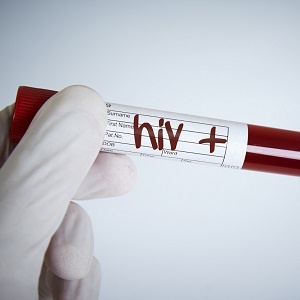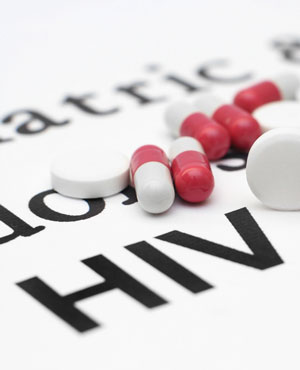
The country’s HIV epidemic is very different today from what it was in the early 2000s. Due to the availability of antiretrovirals (ARVs), people with HIV are living longer. Far too many people still die of HIV-related causes (around 68 000 in 2019), but the time of multiple funerals every weekend for people who had died of Aids is over and life expectancy has recovered from a low of 53 years of age in 2004 to over 66 today.
Today’s ARVs have much fewer stigmatising side effects than the ones we used a decade ago. We also know that, since the publication of a landmark trial in 2015, taking ARVs reduces the risk of TB and various cancers, even if your immune system is not showing any signs of decline.
We now know that taking ARVs is good for the health of any person living with HIV – and that it is good for that person’s sexual partners and the wider community. This is because ARVs suppress the virus in a person’s body, making transmission less likely – in fact, most HIV-positive people who are stable on HIV treatment reach viral suppression (so little virus in the body that standard viral load tests can’t pick it up) and become non-infectious.
And yet, for all the progress we have made and for all the new knowledge we now have, there are still estimated to be well over 500 new HIV infections in South Africa every day.
Read: Why learners need easy access to condoms in schools
To understand why the rate of new infections remains so high, let’s consider a bit of basic epidemiology. Generally speaking, if you have a large pool of infectious people interacting with a large pool of people who are susceptible to infection, you should have a relatively high transmission rate. This is the case with HIV in South Africa. HIV-positive people with suppressed viral loads are not infectious. Even so, conservatively estimated, there are at least 2.5 million people living with HIV in South Africa who are not virally suppressed. Some people in this large pool will continue to transmit HIV to the even larger pool of people who are susceptible to infection.
There are various things we can do to prevent HIV being transmitted. The correct use of condoms is particularly effective and we should keep promoting it. Providing people at risk of contracting HIV with pills to protect against infection is also effective, but government has as yet not put many resources behind this. Medical male circumcision reduces men’s risk of acquiring HIV, which in turn reduces the risk that their sexual partners will contract the disease. Behavioural interventions such as promoting abstinence do not work and are a waste of money.
Condoms, pre-exposure prophylaxis, voluntary medical male circumcision – these measures are all important, but the most effective way to reduce the rate of new infections is to shrink the pool of people who are infectious. Quite simply, if there are fewer people who can transmit HIV, there will be fewer transmissions. The best way to shrink the pool is to help infectious people become non-infectious by taking treatment. Unfortunately, this is easier said than done.
The country does well when it comes to HIV testing – about nine in 10 people living with the virus know their status. Similarly, close to nine in 10 people on treatment have viral suppression and are non-infectious. The problem is in what happens between testing and viral suppression – getting people on to treatment. Only about seven in 10 people who know that they are HIV positive are on ARVs. This problem has two sides – some people who test positive never start taking treatment, and some who do start taking treatment stop doing so.
The problem is even more acute when it comes to men. Men are less likely to get tested for HIV – and if they test positive, they are less likely to take treatment.
Why do so many people who need treatment for the benefit of their own health decide not to take it? This is probably the most important question about HIV today. The data is unclear, but we can make some educated guesses.
Some people living with HIV will not feel ill and thus not seek treatment until they feel very ill. Others, maybe due to the lasting impact of the country’s history of Aids denialism, might believe ARVs to be toxic or ineffective. Both these problems underline the need for clear, ongoing public HIV-awareness campaigns.
It is also a problem that going to the clinic is often a frustrating and undignified experience. Long queues, poor handling of medicines, stockouts, inefficient and ineffective record-keeping, over-worked healthcare workers, a lack of confidentiality – these are all avoidable problems that turn many healthcare facilities into unpleasant places to visit.
As with much else that is wrong in the healthcare system, the underlying problem is a lack of good and effective governance in most of our provincial departments of health, due to endemic politics of corruption and patronage. But even within the current atmosphere of political interference and mediocrity, there are things we can do to help people start and stay on treatment. Some initiatives, like allowing people to collect their medicines at pickup points such as pharmacies or at adherence clubs, are steps in the right direction, as is the Welcome Back programme. But for these initiatives to truly transform our HIV response will require much greater and more sustained political backing.
Read: Vision 2030: A generation free of HIV
Unfortunately, as we head into 2020, it appears HIV has largely dropped off the president’s and even the health minister’s lists of priorities. The rhetoric around HIV will no doubt tick most of the right boxes on World Aids Day today, but the moment will come and go and soon all attention will again be turned to National Health Insurance (NHI).
The NHI is a way for the ruling party to, at least partially, control the narrative around health and create the impression that solutions are on the way. It also conveniently places all blame for the dysfunction in our public sector on misaligned resource distribution between the private and public sector rather than on mismanagement and corruption. Even so, who knows, it might well be that the NHI will in a decade or so help bring more professional health services to more people. But that is still on the distant horizon.
Meanwhile, over 500 people in South Africa will become newly infected with HIV today and about 180 people will die of HIV-related causes. The epidemic will not go away the day after World Aids Day. What’s more, on that day, as on any other day, many of the 7.5 million people living with HIV in this country will choose to rather get sick or die than go to a clinic. This harsh reality is the number one problem in our HIV response today. It is high time that it got the political attention it warrants.
Low is editor of Spotlight, an online publication monitoring healthcare in SA
 | ||||||||||||||||||||||||||
Get in touchCity Press | ||||||||||||||||||||||||||
| ||||||||||||||||||||||||||
| Rise above the clutter | Choose your news | City Press in your inbox | ||||||||||||||||||||||||||
| City Press is an agenda-setting South African news brand that publishes across platforms. Its flagship print edition is distributed on a Sunday. |




 Publications
Publications
 Partners
Partners









